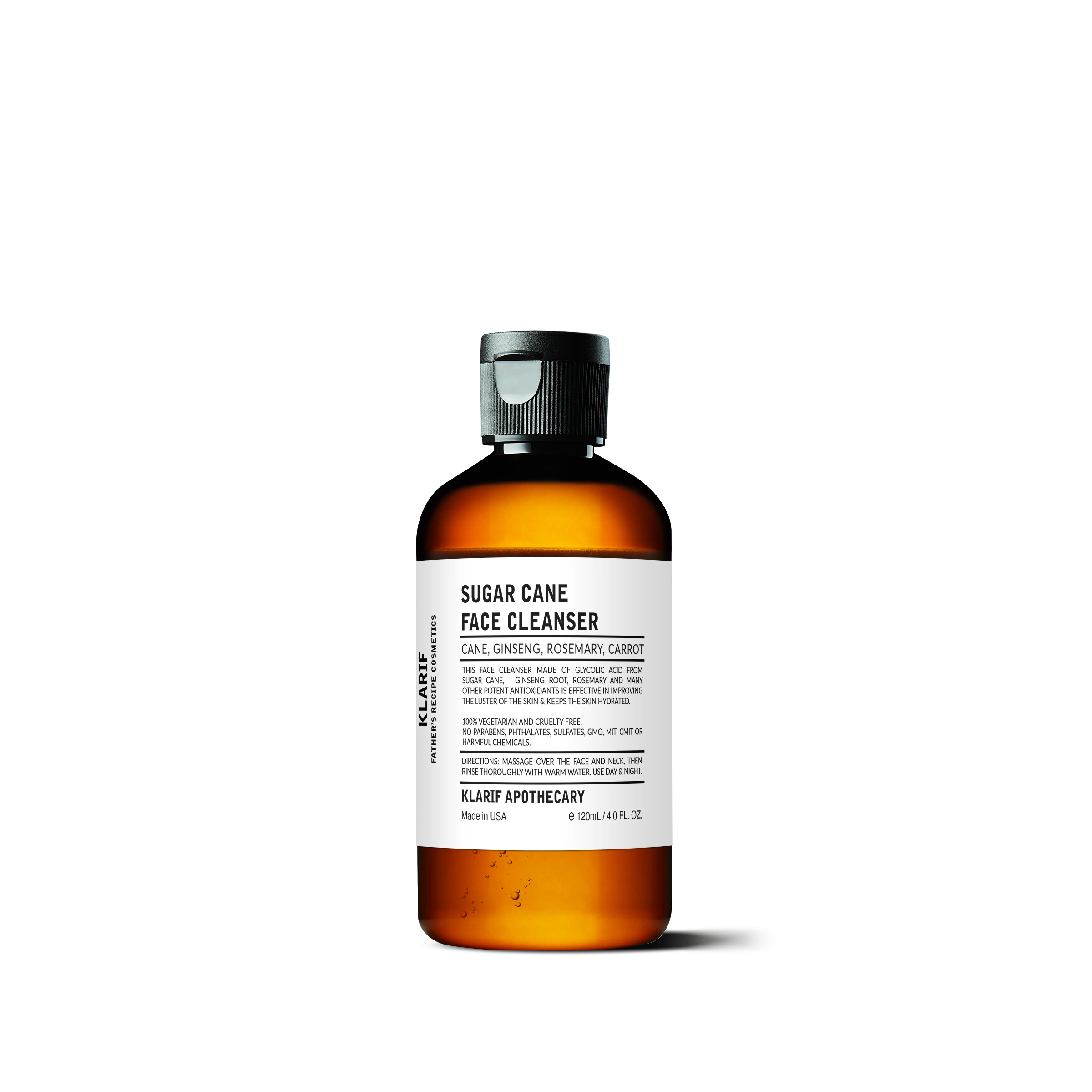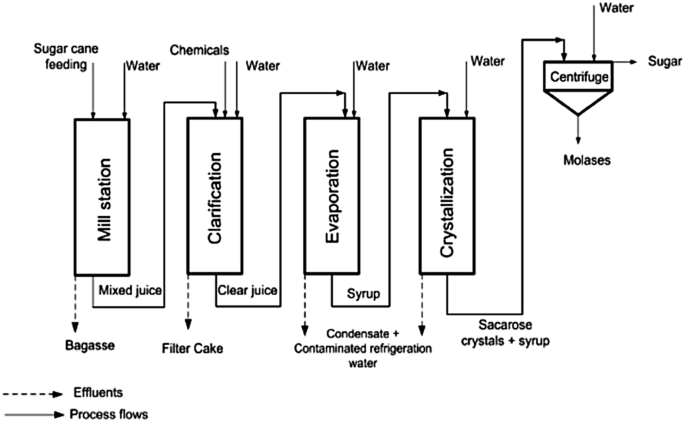Revealing the Surprising Use Sugar Cane in Industry and Cuisine
Sugar Cane is typically recognized primarily for its role in sugar, yet its applications prolong far beyond that domain name. In different sectors, it contributes to biofuels and eco-friendly plastics, showcasing its possibility for sustainability. At the same time, in the culinary world, sugar Cane boosts both mouthwatering and wonderful dishes. This exploration reveals exactly how this flexible plant supports environmental and health advantages, inviting a better consider its complex payments. What exists underneath its sweet surface area?
The Function of Sugar Cane in Biofuels
Although several crops add to the production of biofuels, sugar Cane sticks out because of its high sugar web content and performance in converting sunlight right into power. This tropical yard is grown extensively in regions with suitable climates, where it thrives and produces considerable returns per hectare. The sugar removed from Cane can be fermented to produce ethanol, an eco-friendly power source that lowers dependence on fossil fuels.
Moreover, sugar Cane biofuels release fewer greenhouse gases contrasted to standard petroleum-based gas, making them an extra eco-friendly choice. Countries like Brazil have effectively integrated sugar Cane right into their energy policies, advertising its usage in transport and power generation. The versatility of sugar Cane in biofuel production also sustains rural economic situations by developing task opportunities in industrial and agricultural markets. On the whole, sugar Cane plays a vital duty in the quest of sustainable power remedies and adds to international initiatives versus environment change.
Sugar Cane as a Source of Naturally Degradable Plastics
As the globe faces the plastic air pollution crisis, sugar Cane emerges as an appealing resource for naturally degradable plastics. Obtained from its plentiful cellulose, sugar Cane can be refined into polylactic acid (PLA), an eco-friendly polymer that acts as a lasting choice to standard petroleum-based plastics. This environmentally friendly material not only lowers reliance on fossil fuels however also decreases carbon emissions during production.
Industries are increasingly embracing sugar cane-based plastics for numerous applications, including product packaging, disposable cutlery, and agricultural movies. These items decay naturally, minimizing the long-lasting environmental influence linked with conventional plastics.
The growing of sugar Cane sustains rural economic climates and advertises sustainable farming methods. As study breakthroughs, the potential for sugar cane-derived biodegradable plastics to change single-use products proceeds to grow, offering a glimmer of hope in the fight versus plastic waste and fostering a round economic situation.
Culinary Applications of Sugar Cane in Savory Dishes
Sugar cane, often celebrated for its sweetness, likewise discovers an area in the culinary domain name of mouthwatering meals. Its juice, when lowered, can develop a rich glaze for meats, imparting both taste and a glossy surface. In different foods, sugar Cane is made use of to marinade proteins, where its all-natural sugars enhance caramelization during cooking.
Furthermore, sugar Cane can be juiced and incorporated with flavors to create vibrant sauces, especially in Asian and Caribbean meals. The fibrous remnants of sugar walking cane, referred to as bagasse, can also be used in grilling, instilling a subtle sweet taste into veggies and fish and shellfish.
In addition, sugar Cane syrup acts as an alternative sugar in salad dressings, stabilizing level of acidity and including depth to tastes. Cooks increasingly explore these avenues, showing that sugar Cane prolongs beyond desserts, enhancing tasty cooking experiences with its special qualities and flexibility.
Innovative Treats Including Sugar Cane
Exactly how can the all-natural sweet taste of sugar Cane be changed into cutting-edge desserts that delight the taste buds? Cooks globally are exploring this adaptability by incorporating sugar Cane into various pleasant treats. One prominent strategy is using sugar Cane syrup as a natural sugar, improving the tastes of cakes and pastries while providing an unique caramel touch.
In addition, sugar Cane can be processed right into granulated form, making it an ideal component for cookies and confections that call for a distinctive sweetness (What Is Sugar Cane Used For). Cutting-edge ice creams and sorbets made from sugar Cane puree showcase its invigorating high qualities, often integrated with exotic fruits for an unique spin
Mousse and puddings instilled with sugar Cane add a layer of complexity to typical treats, supplying a delightful equilibrium of sweetness and structure. Overall, the culinary possibilities of sugar Cane in treats proceed to motivate creative thinking, capturing the essence of this all-natural active ingredient in wonderful brand-new forms.
Sugar Cane Juice: A Refreshing Beverage Choice
Sugar Cane juice provides a healthy option to lots of standard beverages, packed with vitamins and minerals that advertise general health. Both modern and ancient dishes display its versatility, making it a popular choice in different societies. In addition, sugar Cane juice works as a healthier sweetening option, appealing to those seeking all-natural choices.
Nutritional Perks of Juice
While numerous beverages offer hydration, couple of match the unique dietary account of sugar Cane juice. Rich in crucial nutrients, this naturally sweet drink contains vitamins A, B1, B2, B3, B5, B6, C, and various minerals such as potassium, calcium, and magnesium. The high antioxidant material helps battle oxidative stress, promoting total health and wellness. Sugar Cane juice also supplies a quick source of power due to its natural sugars, making it an excellent option for professional athletes and people requiring an energy increase. Furthermore, its reduced glycemic index makes it ideal for those monitoring blood sugar degrees. Moisturizing and rejuvenating, sugar Cane juice sticks out as a nutritious choice to lots of conventional beverages, sustaining both health and wellness.

Standard and Modern Recipes
Structure on its nutritional advantages, sugar Cane juice has actually influenced a variety of modern-day and typical recipes that display its convenience as a revitalizing beverage alternative. In lots of cultures, it is delighted in fresh, commonly served with a squeeze of lime or mint for added flavor. Conventional recipes include invigorating sugar Cane juice combined with coconut water, developing an exotic beverage appreciated in warm environments. Modern analyses have actually emerged, featuring sugar Cane juice as a base for mixed drinks, smoothies, and also desserts. Mixologists and cooks explore its natural sweetness, coupling it with spices like ginger or natural herbs like basil. These ingenious uses highlight sugar Cane juice's flexibility, making it a favored selection for those looking for invigorating and savory beverage options.
Much Healthier Sweetening Different
As consumers progressively seek healthier alternatives, sugar Cane juice becomes a revitalizing sweetening alternative that supplies countless advantages. This all-natural beverage, removed from fresh sugar walking cane, consists of crucial vitamins, minerals, and anti-oxidants, promoting total health and wellness. Unlike refined sugars, sugar Cane juice has a reduced glycemic index, making it an ideal option for those checking blood glucose degrees. Additionally, its hydrating buildings make it an invigorating beverage, especially in warm environments. The juice can be taken pleasure in by itself or included into numerous beverages, improving taste without the disadvantages of fabricated sweeteners. As a much healthier sweetening option, sugar Cane juice not only pleases the palate however likewise contributes favorably to a well balanced diet plan.
Health And Wellness Perks of Sugar Cane and Its By-products
Although commonly linked largely with sweet taste, sugar Cane offers a variety of wellness benefits that prolong beyond its use as a sweetener. Rich in essential nutrients, sugar Cane juice includes vitamins A, Minerals, c, and b like calcium, magnesium, and iron, adding to total health and wellness. Its high antioxidant web content aids fight oxidative anxiety, possibly decreasing the danger of chronic diseases
Sugar Cane by-products, such as molasses, give additional wellness benefits. Molasses is known for its iron content, useful content which can aid avoid anemia, and its ability to support digestive system health and wellness due to its rich fiber web content. Sugar Cane is also thought to aid in hydration, making it a preferred option in exotic areas.
Lasting Farming Practices for Sugar Cane Manufacturing

While the demand for sugar Cane proceeds to grow, executing sustainable farming practices is vital to alleviate ecological effects and protected lasting viability. Farmers are significantly adopting plant rotation, which enhances soil health and wellness and reduces bug infestations. By alternating sugar Cane with beans or various other plants, they can keep vitamins and mineral balance and reduced dependancy on chemical plant foods.

Additionally, the promo of chemical-free farming approaches is gaining traction, fostering biodiversity and improving ecological blog here community durability. These practices not just support environmental sustainability but also generate top notch sugar cane, attracting health-conscious customers. Eventually, embracing these sustainable methods guarantees that sugar Cane production can satisfy future needs without endangering the earth's health.
Frequently Asked Concerns
Can Sugar Cane Be Utilized in Standard Medicine?
The questions relating to sugar walking stick's duty in traditional medication reveals its potential benefits. Historically, numerous societies have utilized sugar Cane for its soothing buildings, believing it aids food digestion and promotes overall health through natural remedies.
What Are the Ecological Effects of Sugar Cane Farming?
The ecological effects of sugar Cane farming consist of logging, water exhaustion, and soil destruction. Pesticide and plant food runoff can damage local communities, while monoculture practices reduce biodiversity, leading to long-lasting eco-friendly discrepancies in affected regions.
Just How Is Sugar Cane Harvested and Processed?
Sugar Cane is commonly gathered either by hand or mechanically. After cutting, it undergoes handling that includes cleaning, squashing, and removing juice, which is after that cleansed and focused to generate sugar or other byproducts.
Is Sugar Cane Gluten-Free?
The concern of sugar cane's gluten-free condition exposes that it is certainly cost-free from gluten, making it a secure option for individuals with gluten level of sensitivities or celiac illness, enabling functional usage in numerous culinary applications.
What Kinds Of Sugar Cane Varieties Exist?
Various sugar Cane ranges exist, consisting of Saccharum officinarum, known for high sugar web content; Saccharum spontaneum, a wild species; and hybrid kinds, which integrate characteristics for boosted yield and condition resistance, satisfying varied farming needs.
Lots of crops contribute to the manufacturing of Recommended Reading biofuels, sugar Cane stands out due to its high sugar content and performance in converting sunshine right into energy. Derived from its abundant cellulose, sugar Cane can be processed into polylactic acid (PLA), an eco-friendly polymer that offers as a lasting choice to standard petroleum-based plastics. Sugar Cane juice also supplies a fast source of power due to its natural sugars, making it a superb option for professional athletes and individuals requiring a power boost. As consumers progressively look for healthier choices, sugar Cane juice arises as a rejuvenating sweetening option that supplies numerous benefits. Unlike fine-tuned sugars, sugar Cane juice has a reduced glycemic index, making it an ideal choice for those keeping track of blood sugar levels.